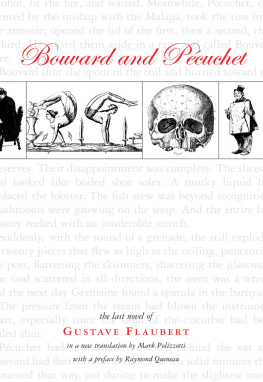Contents
Acknowledgements
Anthropomorphics
A Brief Introduction
The Use of a Center
Origin and Hypothesis
A Grammar of the Social
The Center and the Declarative
The Centrality of the Center
The Generativity of the Center
Metalanguage and Metapolitics
Post-Sacrificial Centrality
Signifying Center, Occupied Center
Talk of the Center
The Center and Imperative Authority
Declarative Order and the Center
Skewing Toward the Center
The Center Without Metalanguage
The Aesthetics of the Center
Mediated Centrality
Center and Distribution
Centered Technology
Turnings to the Center
The End of Secular Thinking
Maintaining the Present of the Center
The Center, Speaking
Bibliography
Glossary
Semantic Primes
NSM Semantic Primes
Acknowledgements
I would first off like to thank Imperium Press for their interest in my book. It has been a pleasure working with their editor.
I would also like to thank Chris Bond, whose blog, Reactionary Future , was very helpful to me as I was working through my critique of liberalism, and who has provided encouragement and collaboration, while making concrete contributions to improving the manuscript. I hope this book and his Nemesis will be read together.
I also thank Joel Davis and Imperius for sustained and challenging intellectual engagement with, and dissemination of, my work and, most of all, doing the kind of legwork and networking I can only imagine so as to produce an audience for the book. I doubt whether I would have written it without the potential readership that, largely thanks to them, I can now hope for.
Also, thanks to everyone on the Postliberalism Discord server, who have been giving GA a real basis in the social world. Im looking forward to seeing what they, and those they inspire, do with these ideas.
And, of course, I wish to express my gratitude to Eric Gans, above all for his still astonishing originary hypothesis, which has guided my intellectual pursuits for around two decades now, while I still feel like Im just getting started; but also for maintaining, almost singlehandedly, the online journal Anthropoetic s, and for hosting the GABlog on his Anthropoetics website, which gave me space to develop many of the ideas in this book.

I
A Brief
Introduction
This book unfolds what I see as the most powerful potentials of the originary hypothesis of the origin of language and humanity proposed by Eric Gans. It might help the reader to keep in mind a couple of methodological principles distinguishing the mode of writing here from what you might see in most theoretical works. First, rather than comparing the picture of the world implicit in the originary hypothesis to similar pictures produced by other theories and trying to measure their respective adequacy to a shared reality from some presumably neutral standpoint, I work under the assumption that the power of a theory lies in its entry into language, or various discursive spaces, such as to convert those spaces into the kind of originary reflection called for by the hypothesis. Second, it follows (and this only became clear to me in the course of writing) that this mode of writing must project a world in which everyone has adopted, or will eventually have adopted, the originary hypothesis and re-purposed their attention and disciplinary spaces accordingly. The way we would all be coming to speak of things if we were all in the process of incorporating the originary hypothesis and all its implications is the way, I find, I am speaking here. So, the reader is thrown in medias res , with regular recallings of the beginnings in the middle. It is an attempt to think outside of, so as to re-enter strategically, what I call (following David Olson) the meta-language of literacy. You are already thinking in originary terms of the center, and so lets think together of how we are doing so and how to do so more explicitlythat is my address to the reader.
Let me put it another way, drawing upon what I see as a seminal distinction within originary thinking, a distinction made by Gans in his The End of Culture , between producers desire and consumers satisfaction:
In the original scene of representation, the members of the community, in designating their object, at the same time imaginarily prolong their act of designation into the originally intended act of appropriation. But this imaginary act aims at the possession, no longer merely of an object of appetitive satisfaction, but of the unique significant referent of the designating gestures of the entire community, This desire, absolute and unfulfillable, is the model of what we might call producers desire.
The scene of representation terminated, each member of the community acts to appropriate his own portion of the object. Now the appetitive goal is subsumed within a desire for participation along with the others in the significance that has just been conferred on the object. We may call this consumers satisfaction. The unsustainable desire for the whole is compensated for by participation in collective appropriation where each receives an equivalent share. (158)
Gans is here referring to a dichotomy between two moments on the originary scene itself, but is doing so in the context of the emergence of the Big Man, who, in the archaic community, distinguishes himself by retrieving producers desire and usurping the center. This move on the part of the Big Man, which, as Gans goes on to say, takes a major step beyond the ritual leaders of egalitarian society toward the divinization that will be the lot of the ancient monarchs (159), is an exceptional act of deferral in order to distribute. But the desire informing the act is the possession of the unique significance of the central object, even if that desire, in its most radical sense, can never be fulfilled (160). Producers desire is necessarily prior to consumers satisfaction, but, since consumers satisfaction takes [the communitys] existence for granted (160), clear, comprehensive, packaged, naturalized and pacified portrayals of social order represent the standpoint of the consumer. It is this standpoint from which all contenders for power presently claim to speak precisely so that they can plausibly claim to represent what is stable in the social order. This book is written to support the praxis of producers desire, which must be integrated into the community (160, italics in original) precisely because it is engaged in producing the significant center which makes order possible. The praxis of producers desire is a praxis of world creation through language, that is, through the appropriation of language and its naming capacity.











